-
 bitcoin
bitcoin $102877.190955 USD
1.88% -
 ethereum
ethereum $3430.435064 USD
4.52% -
 tether
tether $0.999264 USD
-0.05% -
 xrp
xrp $2.307310 USD
4.49% -
 bnb
bnb $987.740692 USD
3.82% -
 solana
solana $161.947760 USD
3.97% -
 usd-coin
usd-coin $0.999712 USD
-0.05% -
 tron
tron $0.292810 USD
2.93% -
 dogecoin
dogecoin $0.179738 USD
10.70% -
 cardano
cardano $0.580716 USD
8.75% -
 hyperliquid
hyperliquid $42.463448 USD
8.40% -
 chainlink
chainlink $15.763437 USD
7.05% -
 zcash
zcash $649.595636 USD
17.21% -
 bitcoin-cash
bitcoin-cash $511.610261 USD
7.19% -
 stellar
stellar $0.292537 USD
7.91%
Perpetual contract holding fee calculation: How does overnight cost affect returns?
Perpetual contracts allow indefinite holding but charge funding fees every 8 hours, calculated using the price premium between mark and index prices.
Jun 17, 2025 at 01:57 am
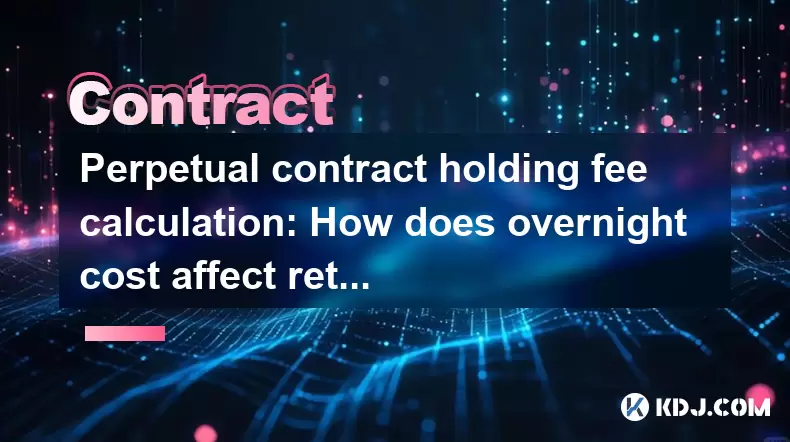
Understanding Perpetual Contracts and Holding Fees
In the realm of cryptocurrency derivatives trading, perpetual contracts have gained immense popularity due to their flexibility and leverage capabilities. Unlike traditional futures contracts that have an expiration date, perpetual contracts can be held indefinitely. However, this comes with a unique cost structure, particularly the holding fee, often referred to as the funding rate.
The funding rate is a periodic payment made between long and short traders depending on the price disparity between the perpetual contract and the spot market. This mechanism ensures that the price of the perpetual contract remains close to the underlying asset's spot price. If the funding rate is positive, longs pay shorts; if it’s negative, shorts pay longs.
How Overnight Costs Are Calculated in Perpetual Contracts
The overnight holding cost or funding rate is typically calculated every 8 hours (three times per day) and is based on the difference between the mark price of the perpetual contract and the index price of the underlying asset. The formula used by most exchanges is:
Funding Rate = (Price Premium / Index Price) × Funding IntervalWhere:
- Price Premium is the difference between the perpetual contract's mark price and the index price.
- Funding Interval is usually 1/3 of a day (i.e., 8 hours).
For example, if the perpetual contract for BTC is trading at $60,000 while the spot index price is $59,000, the price premium is $1,000. Dividing this by the index price gives approximately 1.69%, which is then multiplied by the funding interval factor (1/3), resulting in a funding rate of ~0.56% per 8-hour period.
This rate is applied to the notional value of the position. So, for a trader holding a $10,000 long position, the cost would be $10,000 × 0.56% = $56 every 8 hours.
Impact of Funding Rates on Trading Returns
Holding fees can significantly impact returns, especially over extended periods. Traders who maintain positions through multiple funding intervals may experience compounding costs or gains depending on the direction of their trade and the prevailing funding rates.
If a trader holds a long position during a period when the funding rate is consistently positive, they will incur repeated payments to short holders, eroding potential profits. Conversely, if the funding rate turns negative, long holders receive payments from shorts, which could enhance returns.
For instance, suppose a trader enters a leveraged long position expecting a bullish move. If the price rises by 2%, but the cumulative funding fees paid amount to 1.5%, the net gain is reduced to just 0.5%. On the flip side, if the market remains flat and the trader pays funding fees for several days, losses can accumulate without any price movement benefitting the trader.
Funding Rate Volatility and Its Effects on Strategy
Funding rates are not static and can vary widely based on market sentiment and liquidity conditions. During periods of high volatility or strong directional bias (e.g., bull or bear markets), funding rates can spike dramatically.
A key consideration for traders is the volatility of funding rates themselves. For example, during the Bitcoin rally in late 2021, funding rates for some altcoins exceeded 1% per 8-hour period, making it costly to hold leveraged long positions. In contrast, during bearish phases, funding rates can go negative, incentivizing longs to hold.
Traders must incorporate funding rate trends into their strategy. Those using automated bots or grid strategies should monitor real-time funding data feeds provided by exchanges. Manual traders should review historical funding rate charts before entering multi-day trades.
How to Check and Monitor Funding Rates on Major Exchanges
Most major cryptocurrency derivatives exchanges like Binance, Bybit, OKX, and BitMEX provide transparent funding rate schedules and calculators. Here's how to check and monitor them effectively:
- Navigate to the perpetual futures section of the exchange platform.
- Locate the specific trading pair you're interested in (e.g., BTC/USDT).
- Look for a tab labeled “Funding Rate” or “Funding History.”
- Some platforms offer a countdown timer showing when the next funding payment is due.
- Use third-party tools or APIs like CryptoFundingRate.com to track live funding rates across multiple exchanges.
Additionally, many exchanges display historical funding rate data, allowing traders to analyze trends and anticipate future costs.
Strategies to Mitigate Holding Fee Impact
To reduce the financial burden of overnight holding fees, traders employ various strategies:
- Hedging: Use options or other futures contracts to offset the exposure and avoid paying funding fees altogether.
- Timing entries: Enter trades just after a funding interval to delay fee payments until the next cycle.
- Arbitrage: Exploit discrepancies between funding rates and spot prices by simultaneously taking positions in both markets.
- Short-term trading: Avoid holding positions beyond a few funding intervals unless the expected profit clearly outweighs the cumulative fee cost.
Each of these methods requires careful planning and execution. Traders should backtest their approach using historical funding rate data before applying it in live markets.
Frequently Asked Questions
Q: What happens if I close my position before the next funding payment?A: If you close your position before the next scheduled funding time (usually every 8 hours), you will not be charged or receive any funding payment for that interval.
Q: Can funding rates be predicted accurately?A: While funding rates are determined algorithmically, predicting them precisely is difficult due to changing market dynamics. However, analyzing historical trends and open interest can help estimate potential directions.
Q: Do all cryptocurrencies have the same funding rate calculation method?A: Most exchanges apply a standardized formula, but slight variations may exist between platforms. Always verify the specific methodology used by your chosen exchange.
Q: Are funding fees taxable events?A: Tax treatment varies by jurisdiction. In many countries, funding fees are considered part of trading costs and may affect capital gains calculations. Consult a tax professional familiar with crypto regulations in your region.
Disclaimer:info@kdj.com
The information provided is not trading advice. kdj.com does not assume any responsibility for any investments made based on the information provided in this article. Cryptocurrencies are highly volatile and it is highly recommended that you invest with caution after thorough research!
If you believe that the content used on this website infringes your copyright, please contact us immediately (info@kdj.com) and we will delete it promptly.
- BlockDAG, Avalanche, Dogecoin: Crypto's Leading Trio in 2025
- 2025-11-07 22:05:01
- Layer 2 Coins: Will There Be a Potential Explosion by 2026?
- 2025-11-07 16:50:02
- Filecoin, ICP, and the AI Infrastructure Renaissance: Is History Repeating?
- 2025-11-07 16:50:02
- Bitcoin's Wild Ride: Surges, Zeros, and the Search for Stability
- 2025-11-07 17:05:01
- XRP, Bitcoin, and the Rally: What's the Deal, New York?
- 2025-11-07 17:25:01
- Filecoin, DePIN, and a Technical Breakout: What's the Buzz?
- 2025-11-07 17:05:01
Related knowledge
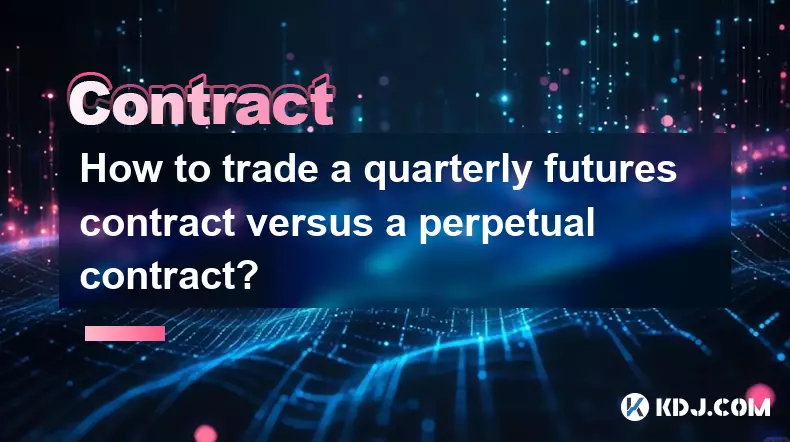
How to trade a quarterly futures contract versus a perpetual contract?
Nov 06,2025 at 06:44am
Understanding the Core Differences Between Quarterly and Perpetual Contracts1. Quarterly futures contracts have a fixed expiration date, typically set...

How to understand the liquidation engine for a crypto contract?
Nov 06,2025 at 09:05am
Understanding the Role of Liquidity Pools in Decentralized Finance1. Liquidity pools are foundational components within decentralized exchanges (DEXs)...
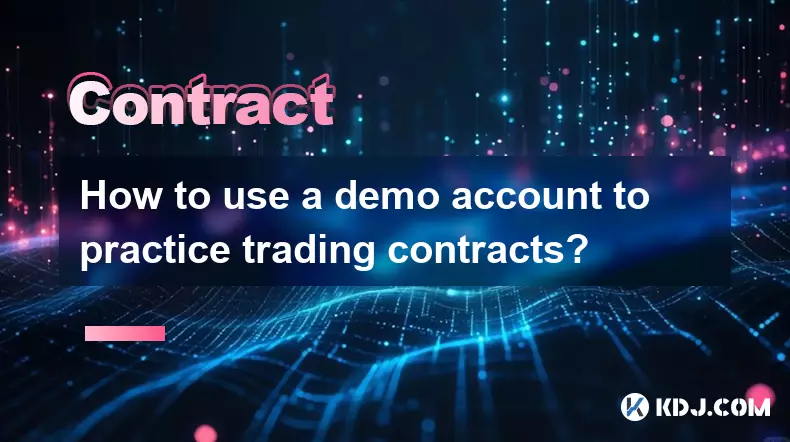
How to use a demo account to practice trading contracts?
Nov 06,2025 at 08:55am
Understanding the Purpose of a Demo Account in Contract Trading1. A demo account allows traders to simulate real market conditions without risking act...
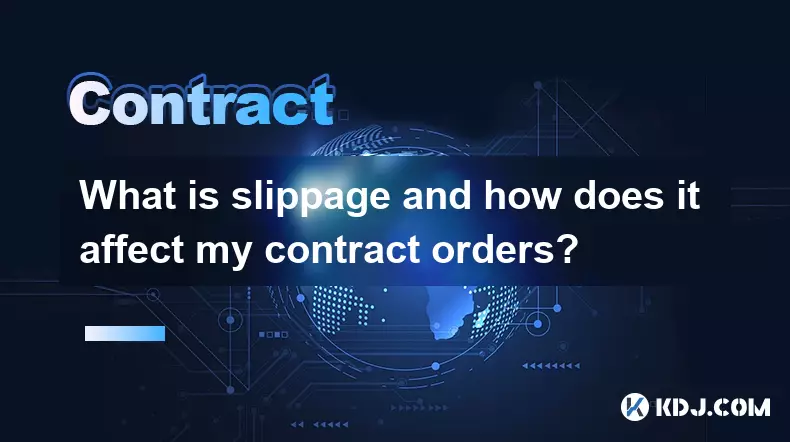
What is slippage and how does it affect my contract orders?
Nov 06,2025 at 05:14am
Understanding Slippage in Cryptocurrency Trading1. Slippage refers to the difference between the expected price of a trade and the actual price at whi...
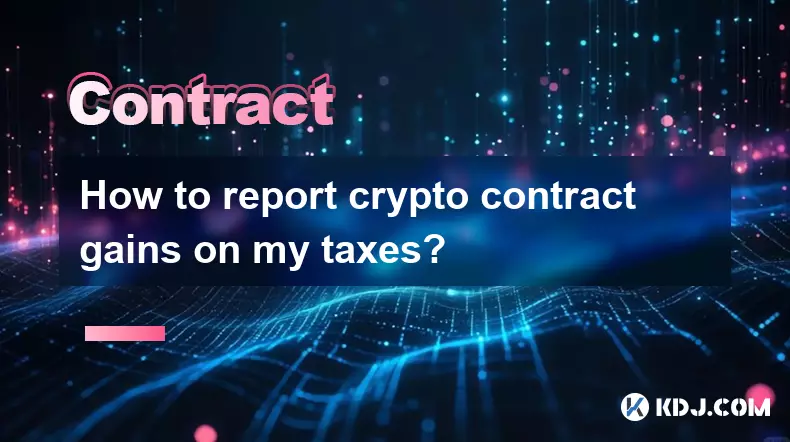
How to report crypto contract gains on my taxes?
Nov 06,2025 at 06:20pm
Tax Classification of Cryptocurrency Gains1. Cryptocurrency contract gains are typically treated as capital gains in most jurisdictions, including the...
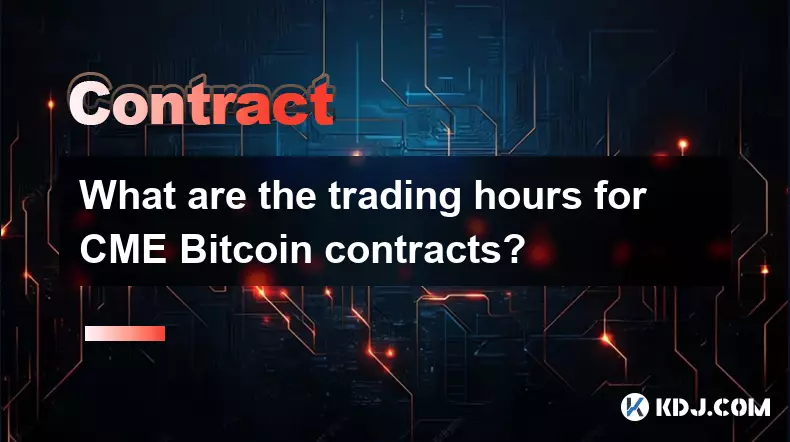
What are the trading hours for CME Bitcoin contracts?
Nov 06,2025 at 02:59pm
Understanding CME Bitcoin Futures Trading Schedule1. The CME Group offers Bitcoin futures contracts that trade nearly around the clock, aligning close...

How to trade a quarterly futures contract versus a perpetual contract?
Nov 06,2025 at 06:44am
Understanding the Core Differences Between Quarterly and Perpetual Contracts1. Quarterly futures contracts have a fixed expiration date, typically set...

How to understand the liquidation engine for a crypto contract?
Nov 06,2025 at 09:05am
Understanding the Role of Liquidity Pools in Decentralized Finance1. Liquidity pools are foundational components within decentralized exchanges (DEXs)...

How to use a demo account to practice trading contracts?
Nov 06,2025 at 08:55am
Understanding the Purpose of a Demo Account in Contract Trading1. A demo account allows traders to simulate real market conditions without risking act...

What is slippage and how does it affect my contract orders?
Nov 06,2025 at 05:14am
Understanding Slippage in Cryptocurrency Trading1. Slippage refers to the difference between the expected price of a trade and the actual price at whi...

How to report crypto contract gains on my taxes?
Nov 06,2025 at 06:20pm
Tax Classification of Cryptocurrency Gains1. Cryptocurrency contract gains are typically treated as capital gains in most jurisdictions, including the...

What are the trading hours for CME Bitcoin contracts?
Nov 06,2025 at 02:59pm
Understanding CME Bitcoin Futures Trading Schedule1. The CME Group offers Bitcoin futures contracts that trade nearly around the clock, aligning close...
See all articles




















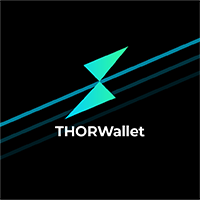
![The Graph Price Prediction [GRT Crypto Price News Today] The Graph Price Prediction [GRT Crypto Price News Today]](/uploads/2025/11/07/cryptocurrencies-news/videos/690d4df44fe69_image_500_375.webp)



















































